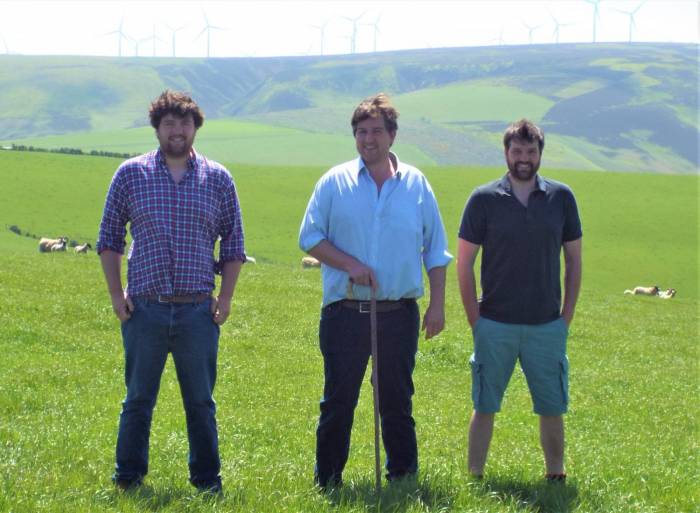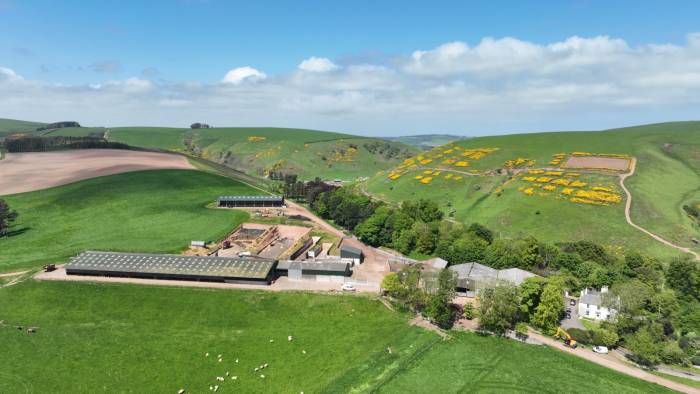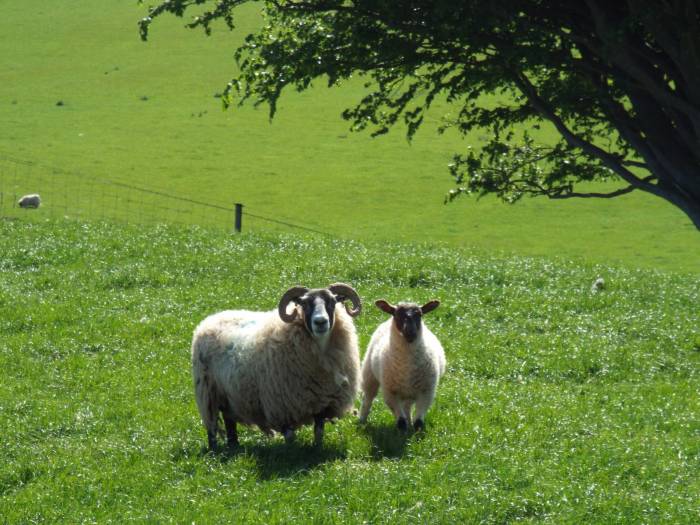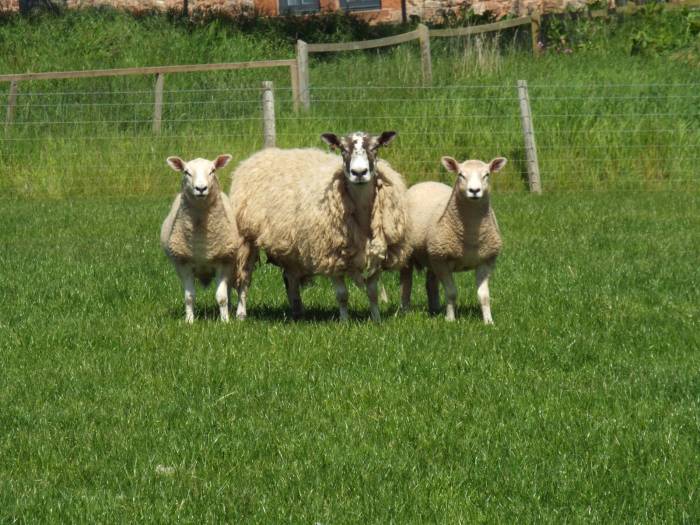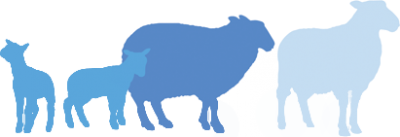Host Farm
Aikengall Farm, Innerwick, Dunbar, East Lothian.
A forward-thinking approach together with the ability to stand back and access their stock and management systems is reaping the rewards for three brothers from East Lothian as they continue to expand their farming enterprise while also honing in on and eradicating problems along the way.
The Hamilton trio – James, Charles and Harry – along with their mother, Vanessa, farm a combined total of 5250 acres across six units near Innerwick, Dunbar, which are a mixture of tenanted, contract farmed and owned.
With some 2800 breeding ewes and a hefty herd of cows, this stands the family in good stead to host the National Sheep Association’s Scotsheep event at Aikengall, on Wednesday, 5 June, 2024.
The homestead, as it were, is the 1900-acre Aikengall which is home to a 1400-strong flock of Blackface ewes as well as 900 spring-calving cows with Simmental genetics featuring heavily in the females which are crossed to Charolais, Lincoln Red and Aberdeen-Angus bulls. This Blackie flock is split in two with 700 bred pure while the remainder are put to the Bluefaced Leicester ram to produce replacement Scotch Mules for the tenanted Nunraw, which lies just over the hill but is 14 miles by road.
Managed by Harry, the flock of 1400 Mules at Nunraw are in a high input, high output system with the aim of selling 1200 Texel-sired lambs before the Royal Highland Show in late June, with the remainder weaned in July and sold thereafter. Just next door lies ***Stoneypath* where they have recently taken on contract farming 156 red dear hinds and 40 Luing cows over 350 acres, and with the two farms sharing a march fence it couldn’t be more ideal.
From the hill at Nunraw, looking to the coast you can see the 600-acre arable unit, Barney Mains, which is run by Charles who grows spring barley and a variety of vegetables and fodder, allowing for a handy bartering system with the brothers for grain, straw, grazing and manure.
“Dad was quite ahead of the game really as there wasn’t much option for succession when he was growing up so when we moved to Aikengall from Lanarkshire he wanted to make sure we three brothers each had a farm to take on should we want to,” explained James, who runs Aikengall.
It’s a system that works well for the team as with outside help only brought in during the tight four-week lambing period, the regular work is shared between the brothers. Livestock, too, could almost be described as being shared about as fattening hoggs and youngstock are grazed on the arable ground while all ewe hoggs and bulling heifers go to the contract farmed block of 2000 acres near Heriot for the summer.
The focus this year, however, with Scotsheep looming, is the sheep enterprise and with more than 5000 lambs due between the two flocks, it’s all systems go.
The fully stratified systems starts with the Blackface ewe at Aikengall and a few bought-in shearlings are used on what James calls the nucleus flock, from which ram lambs are used on the pure-bred flock before selling on as shearlings the following year.
A small flock of a dozen or so Bluefaced Leicesters are kept to breed tups for the crossing job which has enabled the team to keep the entire flock as closed as possible with only stock rams purchased.
“We do sell some Blackie tups each year but we’re breeding for commercial attributes so carcase is the main factor. We’re quite lucky in the respect that we can move a pure-bred Blackie to the cross-bred flock if she’s not right, but we’ve found that we really need the Blackie and Mule flocks to be the same size to maintain both with home-bred replacements,” commented James.
The resulting Mule moves to Nunraw where she is bred to Texel rams with a clear focus again being on carcase to produce a uniform crop of lambs that can be finished in a relatively short space of time off grass.
Harry explained: “We’ve tried a few different breeds here but the Texel clicks well with our ewes and our system as by avoiding the fashionable sorts with strong heads and opting for big, bare rams with a good carcase we’ve got the advantages of easy lambing and lambs that grow on well with a large proportion of them finished in 10-12 weeks.”
Ewes run with teasers ahead of tupping then breeding rams are given just four weeks to keep a tight lambing period, resulting in a more uniform crop of lambs but, just as importantly, frees sheds for calving from April onwards.
“We bolused the hoggs this year which we think made a real difference and we keep the Mules quite tight while tupping to try and reduce the number of triplets. We’ve had what would be described as good scanning percentages in the past of near 210% but this year’s 195% is much more manageable and should allow us to get lambs away quickly,” said Harry, adding that there was less than 2% of the flock scanned empty.
The brothers have also been metabolic testing their ewes ahead of lambing over the last few years. Blood samples are taken from a couple of ewes in each group and good levels of energy and protein have meant they could hold off on offering supplementary feeding for a few weeks, or if levels were low would have meant feeding slightly earlier than planned.
The flock health testing doesn’t stop there though as having noticed they were losing a percentage of the flock each year – up to 7% - the Hamiltons decided to take a proper look at what was causing it and Ovine Pulmonary Adenocarcinoma (OPA) was flagged up. This contagious viral disease that leads to lung cancer has a major effect on flock productivity and can often go unnoticed. The entire flock is now tested twice a year by transthoracic ultrasound which detects tumours in the lungs and while it is a labour-intensive couple of days, the culling of infected animals has brought OPA instances down to less than 1%.
“We are ruthless in getting problems right and have a tough culling policy so anything with problem feet, bad back or prolapses are gone – there are no second chances here,” pointed out James.
“We firmly believe these issues are genetic so by getting rid of them as we go has made the job easier further down the line and I can proudly say I haven’t turned a ewe over to sort her feet for about 10 years.”
The cattle herd, too, is constantly appraised with any feet, bag or temperament problems swiftly sent down the road, and a short six-week bulling period results in a tight calving period with even batches of calves that are all finished on site.
There have been significant investments in infrastructure too and the recently erected 300 foot x 80 foot slatted shed at Aikengall has enabled the team to winter 600 cattle inside and bullocks are kept in during the summer too for a more efficient weight gain.
James pointed out: “To us, the cost of putting up sheds can be equated to buying more land as it’s allowed us to increase our stock numbers but we also lamb everything inside now, including the Blackies which we did for the first time when the Beast from the East hit and the losses during that time would have been unimaginable.
“Plus, we get the advantage of slurry and the difference it’s made to our grazing ground and reducing fertiliser costs is clear to see.”
The ethos of organic farming from when they first moved to Aikengall taught the family a lot about grazing management and so soil is constantly tested for nutrients and pH, and grass freshened up every 10 years or so in a rotation. Grass mixtures tend to have 15% red clover mixed in, a fine balance between being a small percentage so as to no affect ewe fertility but enough to aid drought resistance.
On the hill too, the brothers are keen to shout about the carbon retention of well managed ground and recent trials by Watsons Seeds have found carbon levels to be 10 times higher than what the government is telling producers and what is reflected in carbon audits.
While they seem to have everything in order, the brothers are very open to change and would rather talk about their problems than their successes, and believe transparency is good for the industry. They’ve worked hard over the years to make a relatively low input system with good infrastructure and while they believe they have the base of a good system, they still have some tweaking to do but thrive on challenge and the will to improve.
They have two phrases they live by – ‘never let your farm know you’re poor by constantly investing in it’, and ‘live like you’re going to die tomorrow, breed stock like they’re going to live forever’ – which don’t seem to have done them too badly!


